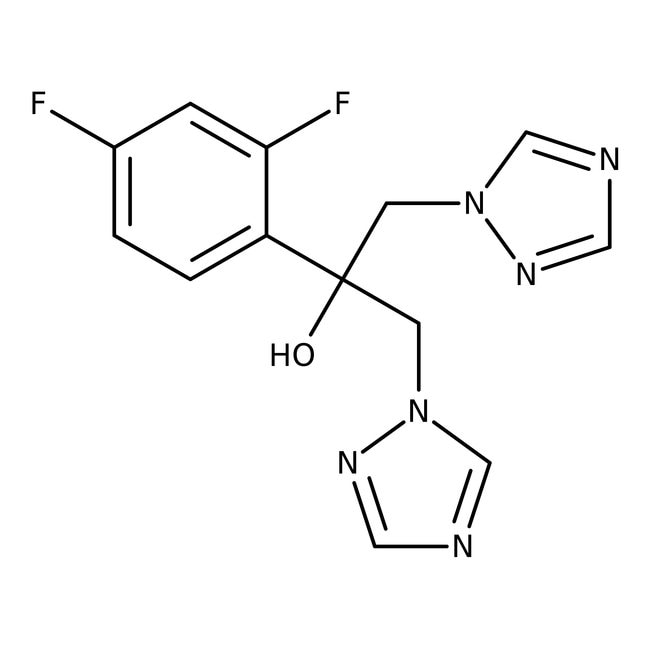Search Thermo Fisher Scientific
Fluconazole, 98%



Fluconazole, 98%
Chemical Identifiers
Specifications
Description
General Description
• Fluconazole, 98% is a triazole compound showing antifungal activity mainly against Candida, Coccidioides, and Cryptococcus species
• It has been shown to inhibit fungal cytochrome P-450 sterol C-14 α-demethylation, resulting in the accumulation of fungal 14 α-methyl sterols, the loss of normal fungal sterols, and associated fungistatic activity
• It also inhibits cytochrome P450 family 2 subfamily c member 9 (CYP2C9)
• Mammalian cell demethylation is much less susceptible to fluconazole inhibition
Applications
• Fluconazole has fungistatic activity against many fungal strains including Candida albicans, Candida glabrata, Candida parapsilosis, Candida tropicalis, and Cryptococcus neoformans.
• Fluconazole interferes with fungal ergosterol synthesis and downregulates the metallothionein gene
• In biological experiments, this compound has been used to assess minimum inhibitory concentration in (MIC)-fungal assays
• It has also been used as a positive control in antifungal assay of plants